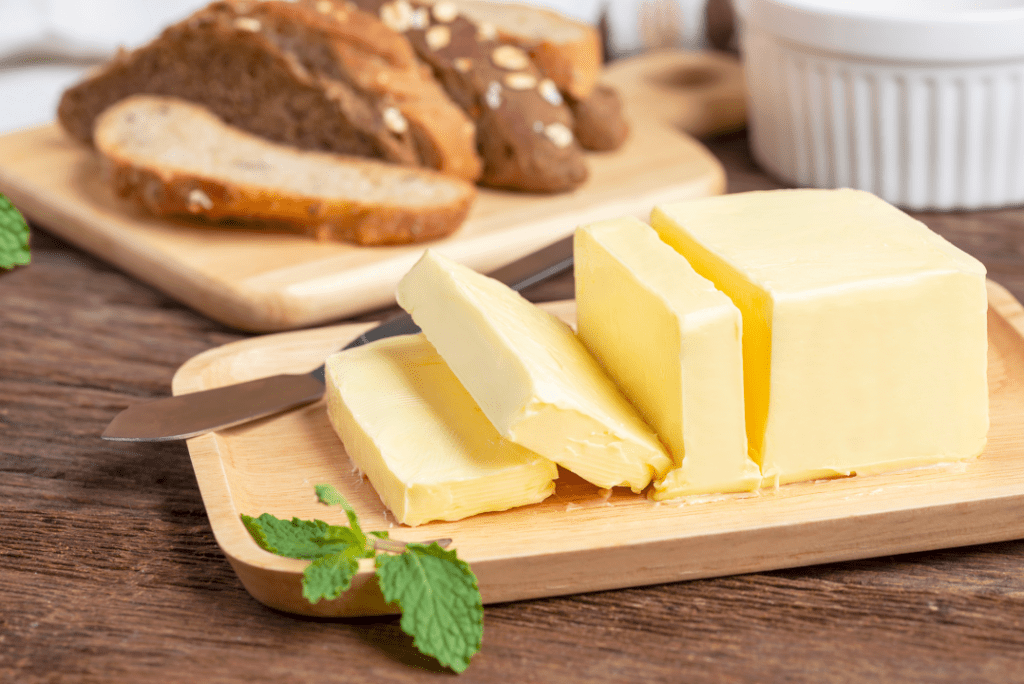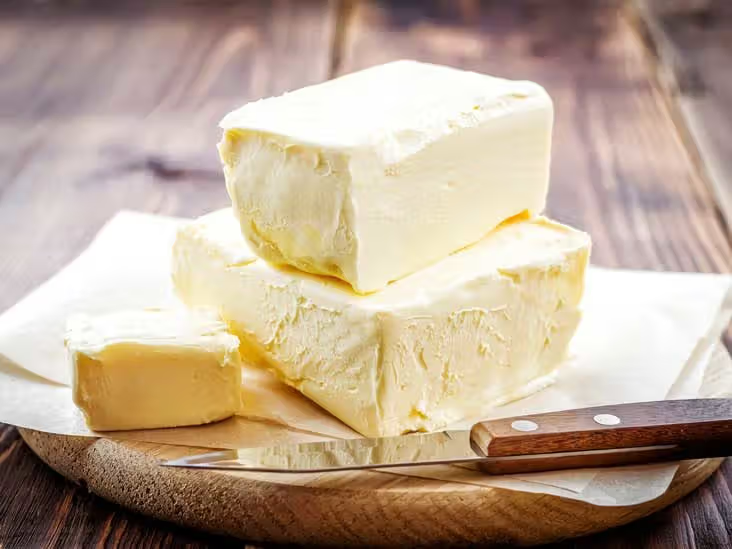The age-old debate about whether butter should be kept on the counter or in the fridge has divided households for generations. Some people swear by soft, spreadable butter at room temperature, while others insist that refrigeration is the only safe way to store dairy products. So, what’s the best approach?
This article explores the science, health risks, and cultural practices behind butter storage to help you make the most informed decision for your household.
Understanding Butter Composition: Why It Matters for Storage

Butter isn’t like other dairy products. Its high fat content (around 80%) makes it more resistant to spoilage compared to milk or cream. It also contains some water and milk solids, which can contribute to mold growth if exposed to air and contaminants for too long.
Because of its low water activity, butter is less prone to bacterial growth, but that doesn’t mean it’s invincible. The way you store butter can impact its flavor, texture, and shelf life—so it’s important to get it right.
Historical Practices: How People Stored Butter Before Refrigeration
Long before refrigerators existed, people needed ways to keep butter fresh. In many homes, butter was stored at room temperature using butter bells or ceramic crocks. These containers created an airtight seal by using water, preventing oxygen exposure and delaying spoilage.
Other traditional storage methods included:
- Salting butter to extend shelf life.
- Burying butter in cool cellars to keep it from melting.
- Wrapping it in cloth soaked in vinegar to prevent bacterial growth.
Video : Tips to Store the Butter
These methods worked in their time, but modern refrigeration has changed the way we think about butter storage.
The Science Behind Butter Storage: Does It Really Spoil at Room Temperature?
From a scientific standpoint, butter is more stable than other dairy products because of its high fat and low moisture content. This makes it difficult for bacteria to thrive. However, butter can still oxidize, turn rancid, or develop mold if exposed to air, heat, or contaminants for too long.
Here’s how different factors affect butter storage:
- Temperature: If your kitchen is warm (above 70°F or 21°C), butter will soften too much, making it more prone to oxidation and spoilage.
- Exposure to air: Oxygen causes butter to go rancid faster, which is why sealed storage is crucial.
- Salted vs. unsalted butter: Salted butter has a longer shelf life at room temperature because salt acts as a natural preservative. Unsalted butter, on the other hand, should be refrigerated for safety.
Health Risks of Leaving Butter Out: Is It Safe?
Many people assume that because butter is a dairy product, it must be refrigerated. The reality? The risk of foodborne illness from butter is low, but it’s not zero.
Here’s what can happen when butter sits out too long:
- Mold growth: Over time, exposure to air and moisture can cause mold to develop on butter, especially if it’s unsalted.
- Rancidity: Even if butter doesn’t spoil in a harmful way, it can turn rancid due to oxidation, leading to an off taste and smell.
- Cross-contamination: If butter is handled with dirty utensils, bacteria from other foods can transfer onto it.
The USDA states that butter is safe at room temperature for up to two days, but beyond that, it’s best to store it in the refrigerator.

Benefits of Refrigerating Butter: Why It’s the Safer Choice
Keeping butter in the fridge may not be as convenient, but it offers several advantages:
✅ Longer Shelf Life: Refrigerated butter stays fresh for up to four months, compared to a few days at room temperature.
✅ Protection from Contaminants: Cold temperatures slow down bacterial growth and prevent cross-contamination.
✅ Preserved Flavor & Texture: Butter in the fridge retains its original taste and texture, without developing a greasy or rancid smell.
The only downside? Hard butter is difficult to spread! But there’s a simple fix—take out a small portion and leave it on the counter for daily use while keeping the rest refrigerated.
Cultural & Regional Differences: Why Some People Keep Butter Out
In some countries, it’s common to leave butter at room temperature due to climate, tradition, and kitchen habits.
- Northern Europe: Many Scandinavian households use butter keepers to store butter at room temperature. The cool climate prevents it from spoiling quickly.
- France: The French often store unsalted butter in crocks but consume it quickly before it can spoil.
- Warmer regions: In hotter climates, refrigeration is a must, as butter melts and spoils faster.
So, whether you grew up with butter on the counter or in the fridge, your preference is likely shaped by tradition and environment.
Expert Opinions: What Do Food Safety Experts Say?

Most food safety experts agree that butter can be left out for short periods, but refrigeration is the safest choice for long-term storage.
- The FDA and USDA recommend refrigerating butter to preserve its quality and prevent contamination.
- Some chefs and bakers argue that keeping a small amount of butter at room temperature improves its texture and spreadability.
- Nutritionists advise storing unsalted butter in the fridge to reduce spoilage risk.
The verdict? A balanced approach is best—keep a small dish of butter out for daily use while storing the rest in the fridge.
Practical Tips for Storing Butter Safely
Want the best of both worlds? Follow these simple storage hacks:
✔️ Use a butter bell or crock to protect butter from air and contaminants.
✔️ Store only a few days’ worth of butter at room temperature.
✔️ Refrigerate the rest in an airtight container to extend its shelf life.
✔️ Freeze extra butter if you buy in bulk—it lasts up to one year in the freezer!
✔️ Keep butter away from strong-smelling foods in the fridge to prevent absorption of odors.
Video : BUTTER, How long it will stay safe and tasty..?!!
Conclusion: Finding a Middle Ground in the Butter Storage Debate
So, should butter be stored on the counter or in the fridge? The answer depends on your climate, personal preference, and how quickly you use butter.
- If you love soft, spreadable butter, store a small amount in a covered dish on the counter.
- If you prioritize freshness and food safety, refrigeration is the better choice.
- If you want convenience and longevity, refrigerate most of your butter and use a butter crock for short-term storage.
At the end of the day, both methods can work—if done correctly. The key is to use proper storage techniques to keep your butter fresh, delicious, and safe to eat!
“‘I Want to Share My Life with Her’: Keanu Reeves Makes Public Appearance with His Gray-Haired Fiancée!
Love knows no boundaries, and Keanu Reeves and his gray-haired partner prove it. Their relationship offers a valuable lesson in a world that often prioritizes youth and appearances. By challenging conventional expectations, their connection invites us to rethink how we view relationships, especially in the public eye.
Reeves’ choice highlights the pressure society places on individuals to conform to certain standards, particularly regarding relationships. His statement, “I want to spend my life with her,” reflects a deep emotional bond that goes beyond surface-level traits. It reminds us that shared values, experiences, and genuine understanding—the real foundations of lasting love—are far more significant than mere physical appearance.
Reeves’ public appearances with his partner challenge social norms and promote inclusivity, encouraging us to embrace love in all its forms, regardless of age. Celebrities like Reeves have the power to shift public perception, and his relationship has sparked important conversations about ageism and the nature of love.

Ultimately, Keanu Reeves being seen with his older partner is about more than celebrity gossip—it’s a statement that defies societal expectations and encourages us to look beyond age and outward appearances to find real connection. His declaration of love reminds us to reconsider what truly matters in relationships as society continues to evolve.




Leave a Reply